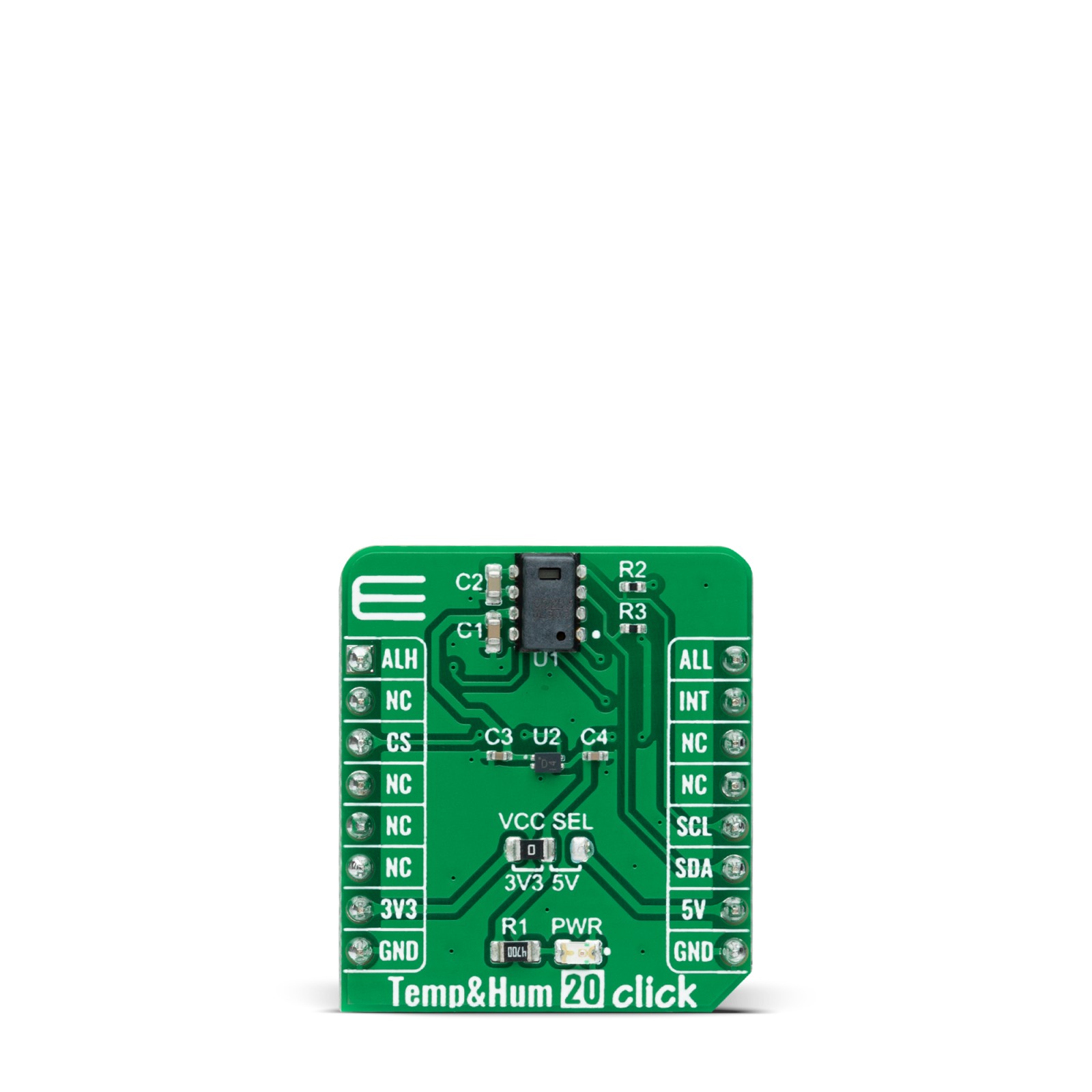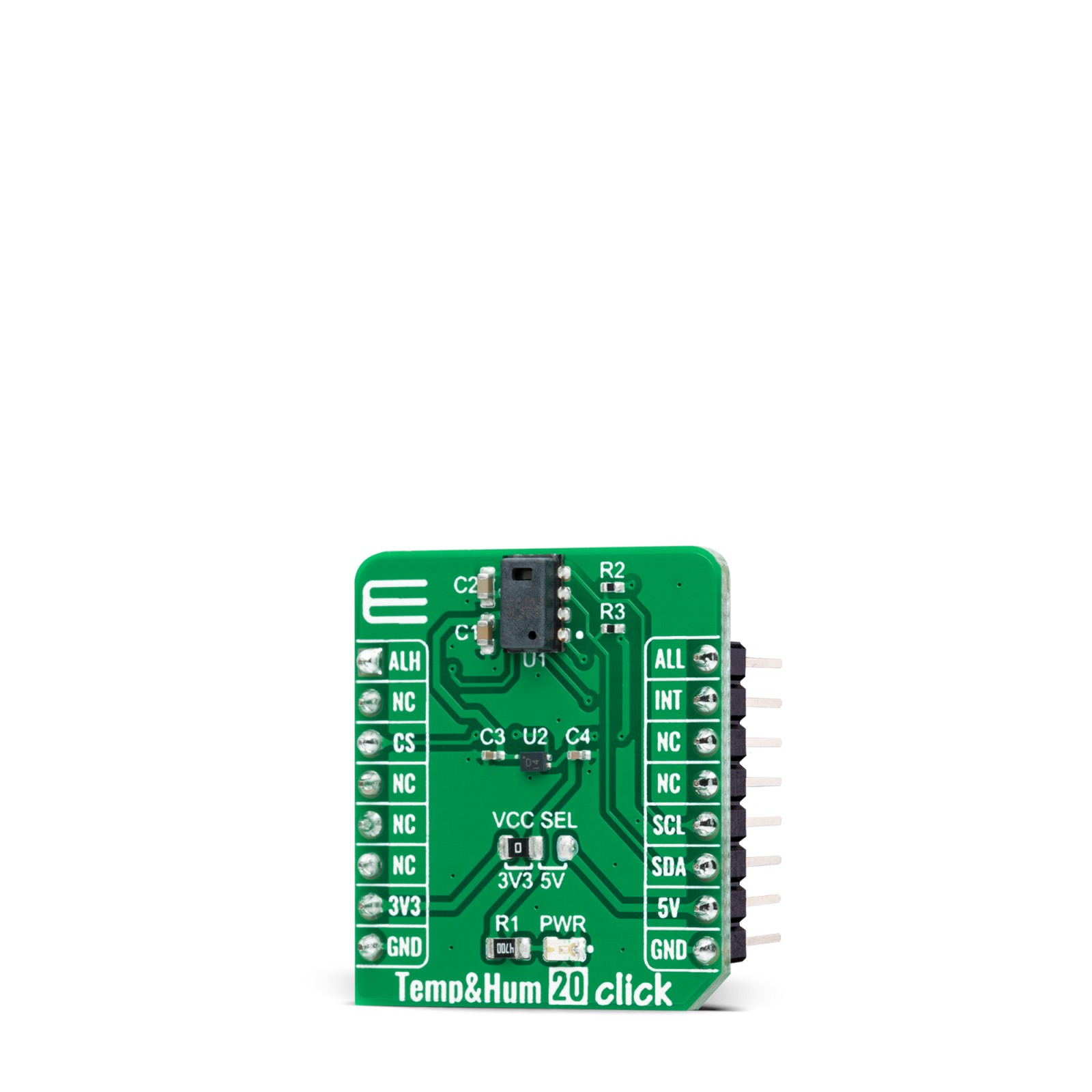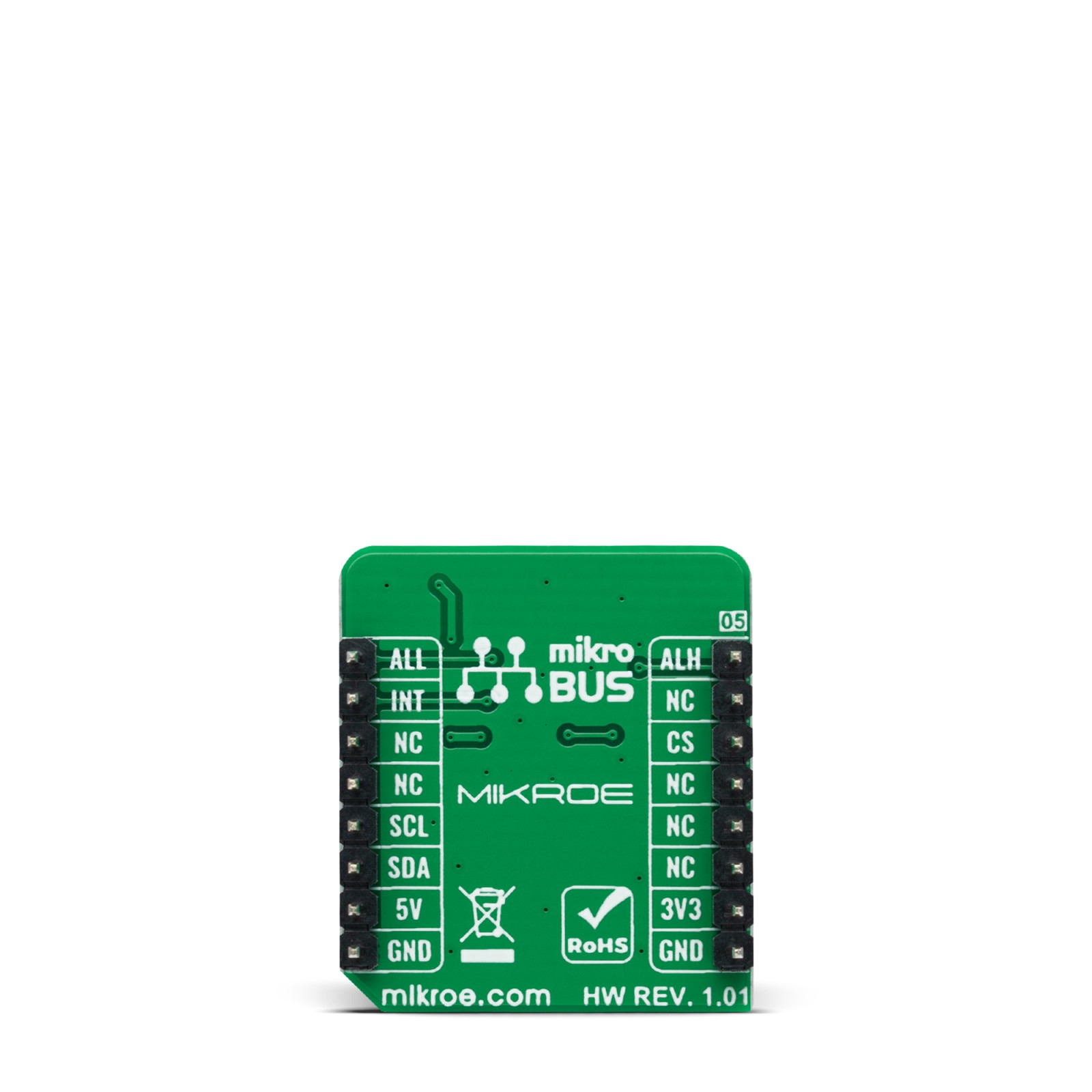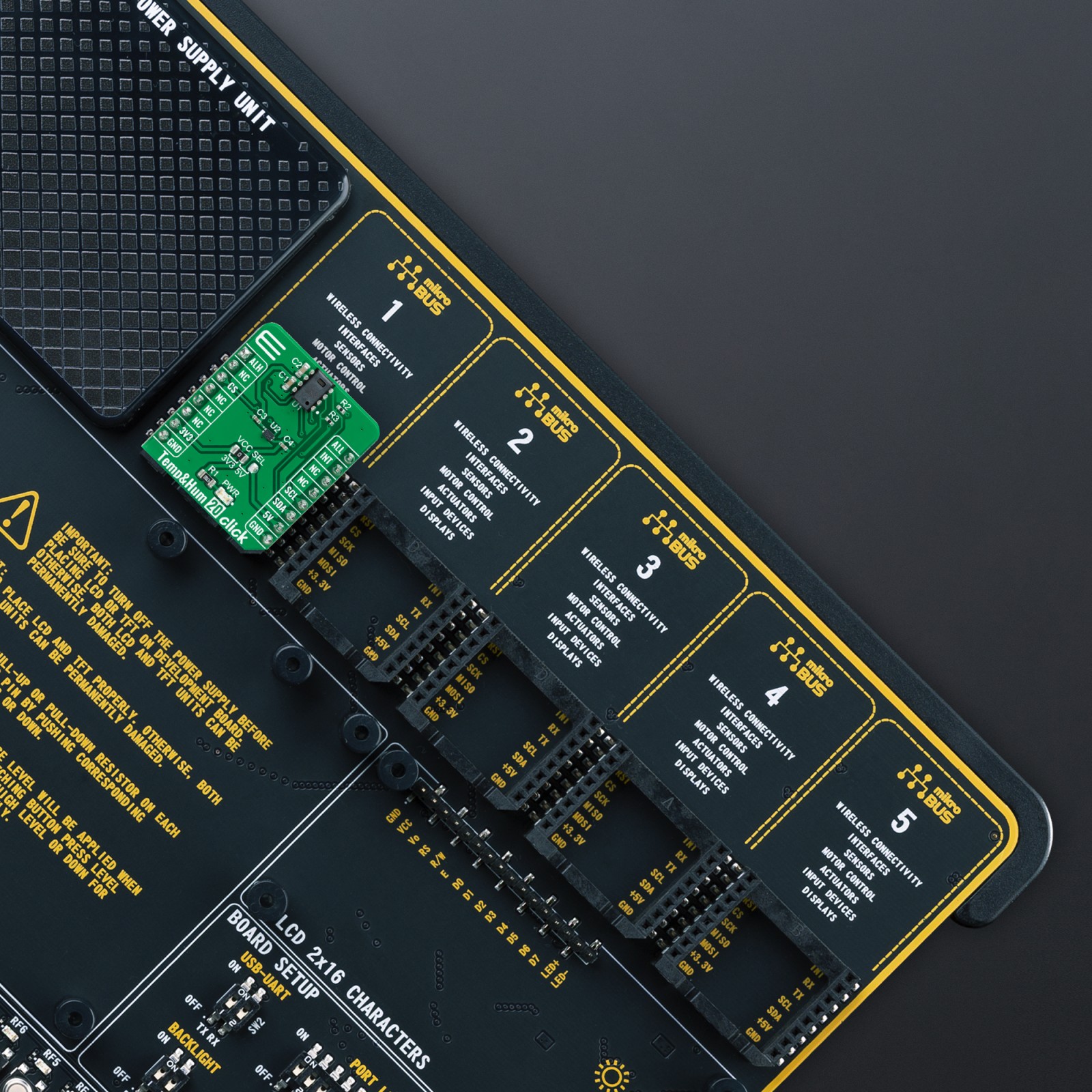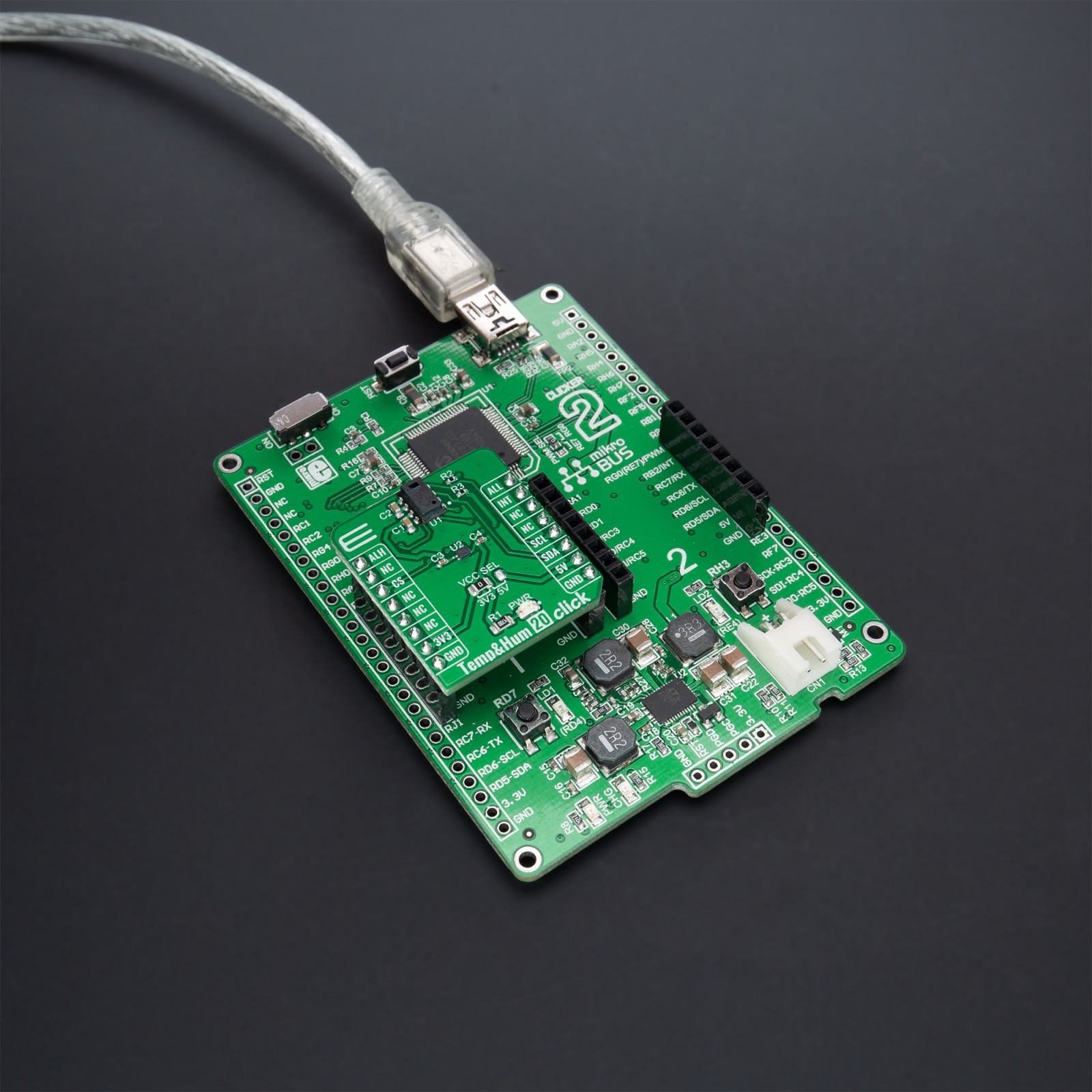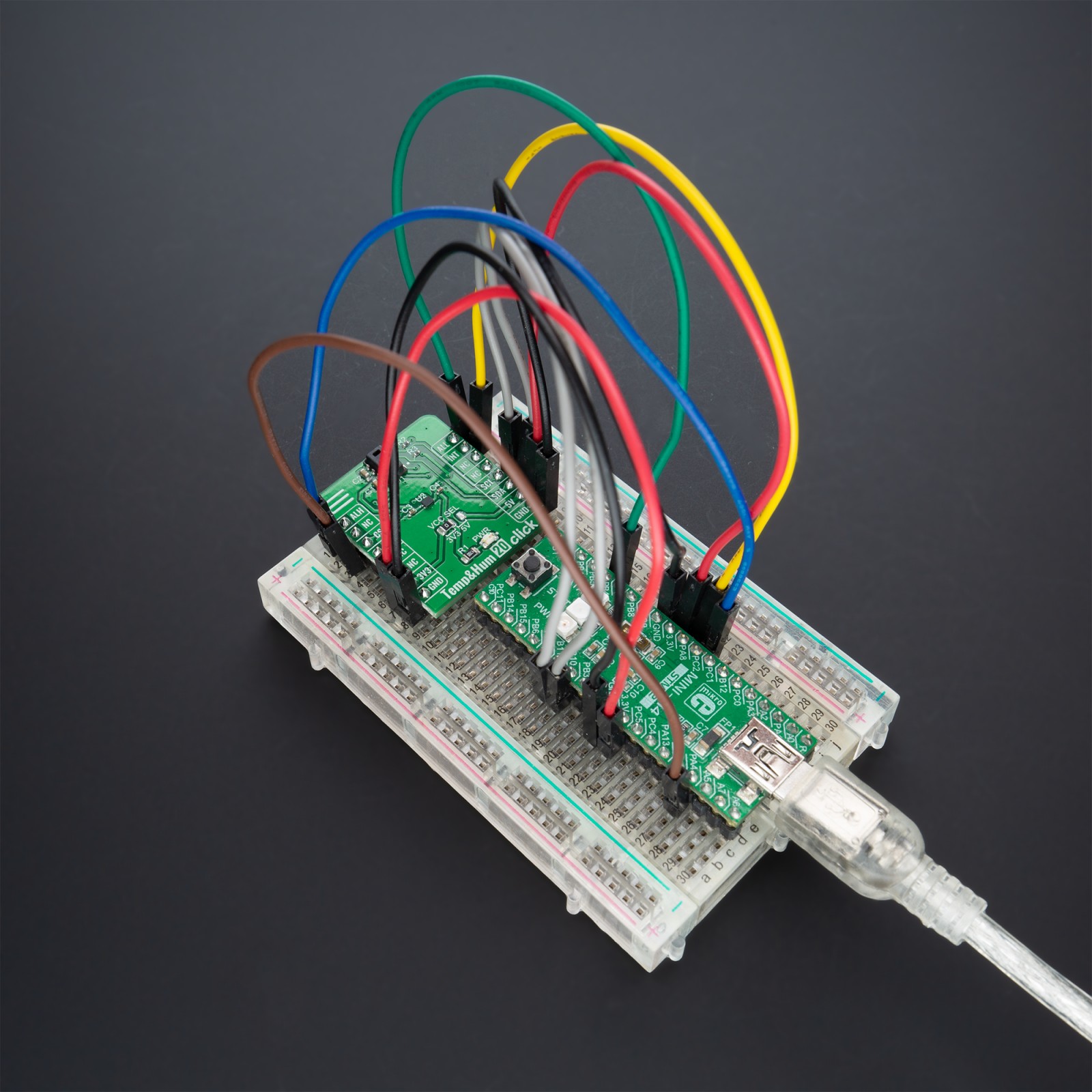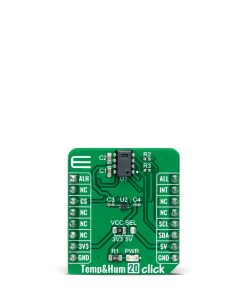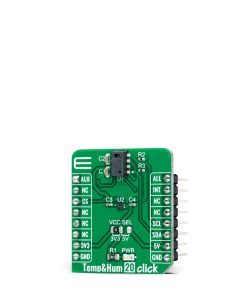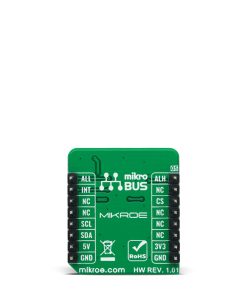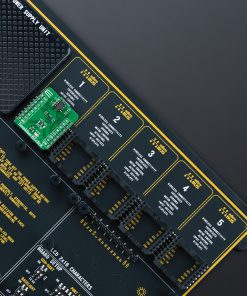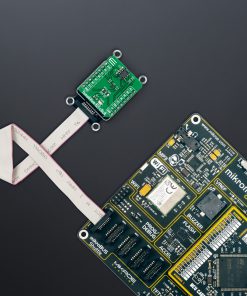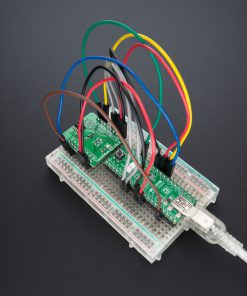Temp&Hum 20 Click
R590.00 ex. VAT
Temp&Hum 20 Click is a compact add-on board that represents temperature and humidity sensing solution. This board features the CC2D23, a highly accurate, fully-calibrated relative humidity and temperature sensor from Amphenol. This sensor, characterized by its high accuracy (±2% from 20% to 80%RH (±3% over entire humidity range)) and high resolution, provides factory-calibrated 14-bit data to the host controller with a configurable I2C interface. It also comes with alarm features for preset control at a minimum and maximum humidity. The long-term stability and reliability, alongside other features, make this Click board™ ideal for various temperature and humidity-related applications and a vast number of applications ranging from portable devices to products designed for harsh environments.
Temp&Hum 20 Click is supported by a mikroSDK compliant library, which includes functions that simplify software development. This Click board™ comes as a fully tested product, ready to be used on a system equipped with the mikroBUS™ socket.
Stock: Lead-time applicable.
| 5+ | R560.50 |
| 10+ | R531.00 |
| 15+ | R501.50 |
| 20+ | R482.62 |

